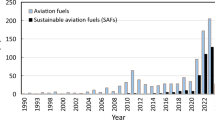Abstract
Ignition of flammable and combustible liquids by hot surfaces is a well-known hazard in motorsports where high-speed collisions and mechanical failures are common. In this paper, we present the results of 900 ignition tests of high performance fuels commonly used in motorsports applications including high-octane gasolines, nitromethane, and methanol. The results of the testing show that hot surface ignition is probabilistic in nature and cannot be defined by a single ignition temperature. It was found that hot surface ignition temperatures for the high-octane gasolines and methanol were several hundred degrees higher than published auto ignition temperatures for these fuels. While methanol has a higher octane number than standard gasolines, its hot surface ignition temperature was lower than gasoline. Nitromethane displayed ignition characteristics markedly different than the other fuels tested, igniting more than 200°C lower than gasoline blends and alcohols, and less than 50°C above its published auto ignition temperature.






Similar content being viewed by others
References
Davis S, Chavez D, Kytomaa H (2006) Hot surface ignition of flammable and combustible liquids. SAE world congress, Detroit, MI, SAE Paper 2006-01-1014
Colwell JD, Reza A (2005) Hot Surface Ignition of Automotive and Aviation Fluids. Fire Technol 41(2):99–117 doi:10.1007/s10694-005-6388-6.
Somandepalli V, Kelly S, Davis S (2008) Hot surface ignition of ethanol-blended fuels and biodiesel. SAE world congress, Detroit, MI, SAE Paper 2008-01-0402
LaPointe NR, Adams CT, Washington J (2005) Autoignition of gasoline on hot surfaces. Fire Arson Investig, pp. 18–21
Arndt SM, Stevens DC, Arndt MW (1999) The motor vehicles in the post-crash environment, an understanding of ignition properties of spilled fuels. SAE Paper No. 1999-01-0086
Severy DM, Blaisdell DM, Kerkhoff JF (1974) Automotive collision fires. In: Proceedings of eighteenth STAPP car crash conference, Society of Automotive Engineers, Warrendale, PA, 4–5 December, pp. 113–199
Clodfelter RG (1990) Hot surface ignition and aircraft safety criteria. SAE Paper No. 901950
Johnson AM, Grenich AF (1986) Vulnerability methodology and protective measures for aircraft fire and explosions hazards. Wright-Patterson Air Force Base, OH, Report No. AFWAL-TR-85-2060
Johnson AM, Roth AJ, Moussa NA (1988) Hot surface ignition tests of aircraft fluids. Wright-Patterson Air Force Base, OH, Report No. AFWAL-TR-88-2101
NFPA 921 (2004) Guide to fire and explosion investigations. National Fire Protection Association, Quincy, MA
U.S. Vehicle Fire Trends and Patterns (2008) National Fire Protection Association. Quincy, MA
Heywood JB. “Internal Combustion Engine Fundamentals,” London: McGraw-Hill(1988).
ASTM E 659-78 (1994) Standard test method for autoignition temperature of liquid chemicals. ASTM, West Conshohocken, PA
Kiewicz, J. “TOP FUEL BY THE NUMBERS.” Motor Trend 57.2.:72–75. Feb. 2005.
Society of Fire Protection Engineers (SFPE) (1995) The SFPE handbook of fire protection engineering, 2nd edn. National Fire Protection Association, Quincy, MA
Author information
Authors and Affiliations
Corresponding author
Rights and permissions
About this article
Cite this article
Davis, S., Kelly, S. & Somandepalli, V. Hot Surface Ignition of Performance Fuels. Fire Technol 46, 363–374 (2010). https://doi.org/10.1007/s10694-009-0082-z
Received:
Accepted:
Published:
Issue Date:
DOI: https://doi.org/10.1007/s10694-009-0082-z




